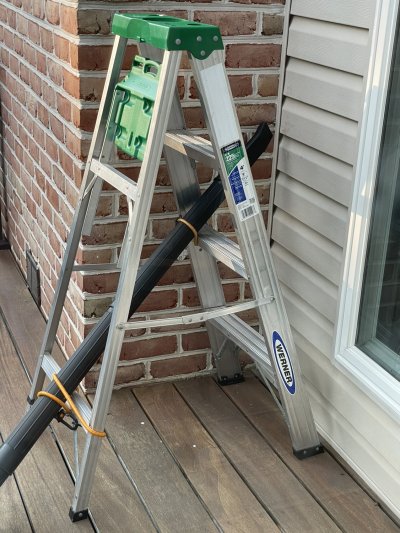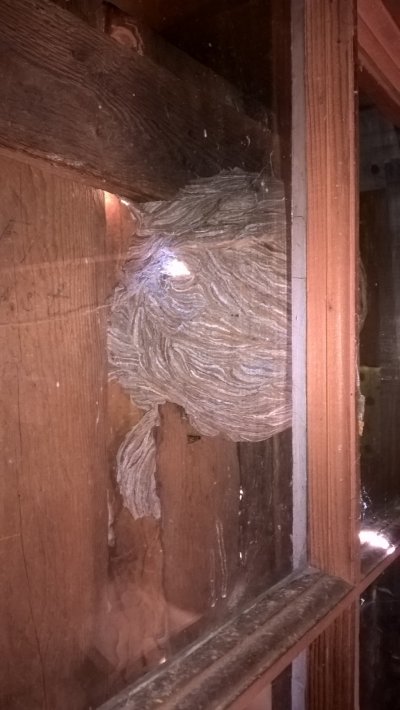EastWest Gal
Thinks s/he gets paid by the post
I'm looking for suggestions.
Three weeks ago I found that yellow jackets had found a hole in the grout of our brick fireplace outside and were nesting under the siding. It's on our deck only 4 feet from our door. Kind of ruining our ability to run out to our pool and grill food as well.
An exterminator put dust in the area, especially at the opening. It did virtually nothing. Another more extensive treatment did virtually nothing. He did not wear any protective gear, and did not try to inject anything into the hole or speak of removing the nest (which would probably involve removing and replacing siding).
It was a waste of money.
Researching YouTube videos, we thought we could probably mostly collapse the colony by vacuuming. We set up our shop vacuum within three inches of the opening, with soapy water in the bottom, used a Wiz plug, protected from the rain and sun, and can turn it on and off with our phones. We have probably reduced the YJ population by 90% and can safely go into the back yard from the kitchen, but they are still showing up .I've noticed that the best time to suck up the buggers are early morning and in the evening, so we have set timers to run the vac at those times.
I'm thinking of setting up a pheremone-based trap in the yard some distance away to trap more of them, maybe even the stressed queen.
Have any of you had the experience of a yellow jacket nest underneath the siding or in your walls, and how have you handled it? Please share your experiences. Thanks.
Three weeks ago I found that yellow jackets had found a hole in the grout of our brick fireplace outside and were nesting under the siding. It's on our deck only 4 feet from our door. Kind of ruining our ability to run out to our pool and grill food as well.
An exterminator put dust in the area, especially at the opening. It did virtually nothing. Another more extensive treatment did virtually nothing. He did not wear any protective gear, and did not try to inject anything into the hole or speak of removing the nest (which would probably involve removing and replacing siding).
It was a waste of money.
Researching YouTube videos, we thought we could probably mostly collapse the colony by vacuuming. We set up our shop vacuum within three inches of the opening, with soapy water in the bottom, used a Wiz plug, protected from the rain and sun, and can turn it on and off with our phones. We have probably reduced the YJ population by 90% and can safely go into the back yard from the kitchen, but they are still showing up .I've noticed that the best time to suck up the buggers are early morning and in the evening, so we have set timers to run the vac at those times.
I'm thinking of setting up a pheremone-based trap in the yard some distance away to trap more of them, maybe even the stressed queen.
Have any of you had the experience of a yellow jacket nest underneath the siding or in your walls, and how have you handled it? Please share your experiences. Thanks.



